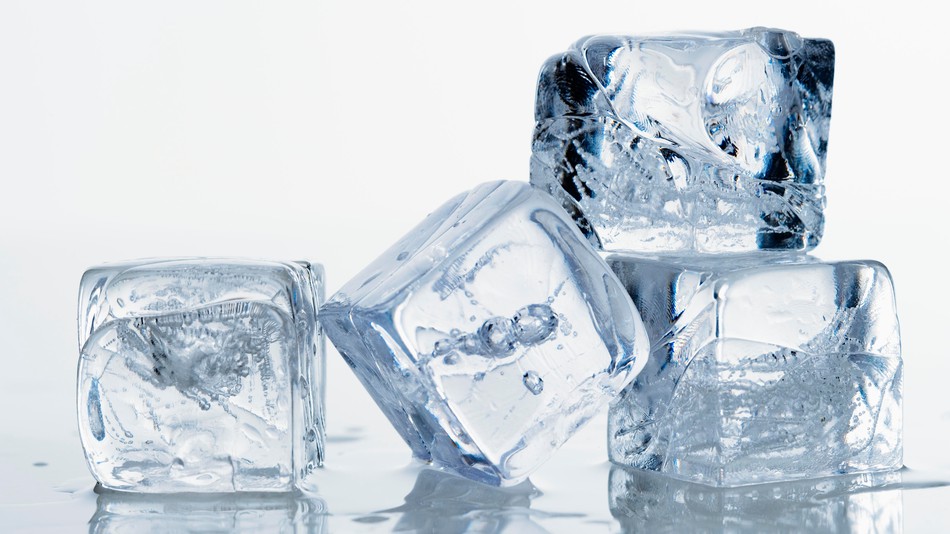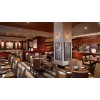Ice machine for commercial kitchen
Ice maker (ice machine) is a kind of refrigeration equipment that generates ice by cooling water through evaporator by the refrigerant in the refrigeration system. It uses a refrigeration system to produce ice through a certain equipment in the state of electrification with the water carrier. According to the principle of the evaporator and the different mode of production, the ice block shapes are different; people generally divide the ice maker into granular ice machine, sheet ice machine, plate ice machine, tube ice machine, shell ice machine and so on.
Types of Ice machine
Modular Ice Machines: Modular commercial ice machines are designed, most commonly, for the sole purpose of creating large amounts of ice. It is important to know that modular ice machines are "modular" because they can fit on top of a variety of ice storage bins; therefore, they can be modified to suit the user's needs in ice amounts. It is necessary for the user to purchase an ice storage bin. Because of this, the purchaser may choose exactly how much ice they would like to produce, and how much ice they would like to store.
Modular ice machines are also designed with staff-use in mind. They are not designed for access by customers or the general public because reaching into a storage bin presents a potential point of contamination. Staff access the storage bin in a kitchen or behind a counter which is typical for these machines.
Modular commercial ice machines can produce between 250- 2,500 lbs of ice per 24 hrs. The ice machine bins can hold between 250 lbs of ice and up to almost 1700 lbs off the shelf; custom manufacturing for larger sizes may be an option as well.
Undercounter Ice Machines: Undercounter machines are designed for both convenience and for smaller areas that normally could not allow for an ice machine due to size/space restrictions. For example, these undercounter machines normally can be found underneath the front of a bar in order to give staff quick access to ice for customers. The most popular application for the undercounter ice machine is for home use. With their convenient size, they typically will fit under countertops that are both standard and ADA (Americans with Disabilities Act) height. These ice makers can come in a variety of cube styles.
A commercial undercounter ice maker can produce anywhere between 50 - 500 lbs of ice per 24 hrs, but undercounter home ice machines more commonly produce 100 - 250 lbs of ice per 24 hrs. Their ice cube storage amount is usually restricted by their size, typically ranging from 7 - 250 lbs of ice.
Dispenser Ice Machines: Dispenser ice machines are designed with the general public in mind. Anywhere an ice machine may be accessed by someone other than staff or employees, a dispenser is best suited. This will prevent the spread of germs or contamination from different unsupervised people reaching into an ice storage bin. A large variety of these machines dispense both water and ice. The ice dispenser is generally in a cubelet or "chewable" form since the main application is fountain drinks and soda stations.
Not all dispensers will have a built-in commercial ice machine. When purchasing a dispenser, it's important to find this out. If the dispenser does not have a built-in ice machine, you will need to have or purchase an ice machine that will fit with it.
Dispensers can come in a variety of sizes and can produce 200 - 800 lbs of ice per 24 hrs. Due to size, they typically only store up to 250 lbs but more commonly store 8 - 12 lbs of ice at a time.
NOTE: Hotels should consider the Hotel Ice Dispenser. They will provide the same type of access (generally more sanitary due to water supply, water temperature, and water filter) as the previously mentioned ice machines. The only difference is they produce much higher volumes of ice. These commercial hotel ice machines can on average produce up to 500 lbs of ice per 24 hr period, and can hold up to 200 lbs of ice at a time.
Types of Ice Cubes
Cube
This is the most traditional offering of ice; the shape of the ice cube is cube-shaped. As redundant as that sounds, it is typically how ice cubes are made. They are usually measured in at 7/8 of an inch all around and usually take longer to melt.
Crescent
The crescent ice cube is a stylized and longer type of ice cube usually looking like half a circle. These ice cubes, to the best of my knowledge, do not provide any significant advantages other than the way they appear.
Gourmet
Gourmet ice is extra fancy ice. The design in this ice cube is intended to be enjoyed with fine glasses of Scotch whiskey or Bourbon whiskey. Gourmet ice cubes are ideal for upscale restaurants or events.
Nugget
Nugget ice resembles little pellets. These ice cubes are ideal for carbonated drinks as they don’t promote fizzing over. Nugget ice is also great to quickly chill drinks and most find it therapeutic to munch on.
Some tips
An ice maker is a simple contraption but it's a mechanical machine which is prone to a number of common issues.
It doesn't matter what kind of an ice maker you need, all ice machines need to be cleaned well.
When you first purchase your ice maker, there is a little cleaning ritual that is imperative. Run a water-vinegar solution through the entire machine for a few cycles. This will not create ice; it will just clean the machine a little bit.
After you have done this, make sure to run plain water through the ice maker for at least a few cycles. Once this is done, your ice maker is ready to go.
There are two other potential problems.
The first is that fans can come loose. This will cause rattling and other annoying noises. To correct this, it's usually simple enough to open the unit up and adjust your fan - or you can contact customer service and let them know about this common problem if you are still under warranty.
Ice Maker And Lemonade On A Counter
The next common problem has to do with sensors.
If you find that your ice machine seems to be fine, but it just won't make more ice there is a good chance your ice machine thinks it's full due to a faulty sensor.
This is a common problem for people who leave the ice in their machines for prolonged periods of time. Water will freeze and stick to the sensor, giving your sensor the impression that the device is filled with ice.
To fix this problem, wipe your sensor clean now and then. Easy to do.
So now you know everything you need to know about ice makers.
You understand how they function, and what parts to pay attention to.
Just make sure you're buying the right size and type of ice machine for your home or business.
Pay attention to ice size, daily capacity and speed of ice production.
Decide whether you're OK using a dedicated water line or refilling the unit by hand.
Related Articles
Search
Categories
Popular Posts






















Comments: 0
No comments